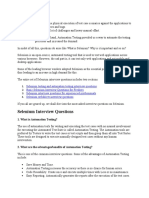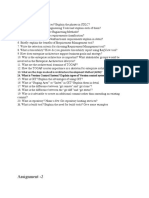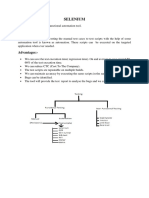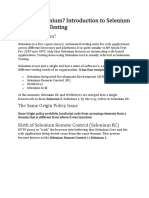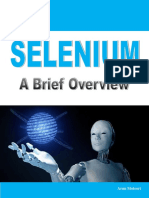Selenium is a widely used open-source framework for automating web browsers.
It allows
developers and testers to write scripts in various programming languages (like Java, Python, C#,
JavaScript, etc.) to control browsers, interact with web elements, and perform automated testing
for web applications.
The term "Selenium Lab" is not a specific product or tool in the Selenium ecosystem, but it
could refer to any environment or setup where Selenium is used for learning, experimentation, or
research. It may refer to:
1. Selenium Testing Environment: A lab or setup where Selenium is used to automate
tests for web applications, simulate user interactions, and validate functionality,
performance, and security.
2. Learning/Training Environment: A practice environment used by learners to
understand how to work with Selenium for automating browser tasks.
3. Research or Experimentation Lab: A testing environment where developers or
researchers explore the latest developments in Selenium, its integrations, or its
capabilities.
Key Components of Selenium:
Selenium WebDriver: The main component that interacts directly with the web browser
and allows you to control and automate actions on a web page.
Selenium Grid: A tool that helps run Selenium tests across multiple machines and
browsers in parallel, which speeds up the testing process.
Selenium IDE: A browser plugin that allows for the recording and playback of tests,
useful for beginners or those without coding experience.
Selenium RC (Remote Control): An older version of Selenium that has now been
largely replaced by WebDriver, but still used in some legacy systems.
Common Uses:
Automated Functional Testing: Ensuring that web applications work as expected by
simulating real user interactions.
Cross-browser Testing: Running tests across different browsers (Chrome, Firefox,
Safari, etc.) to ensure consistent behavior.
Performance Testing: Verifying that the web app performs well under different
conditions and loads.








